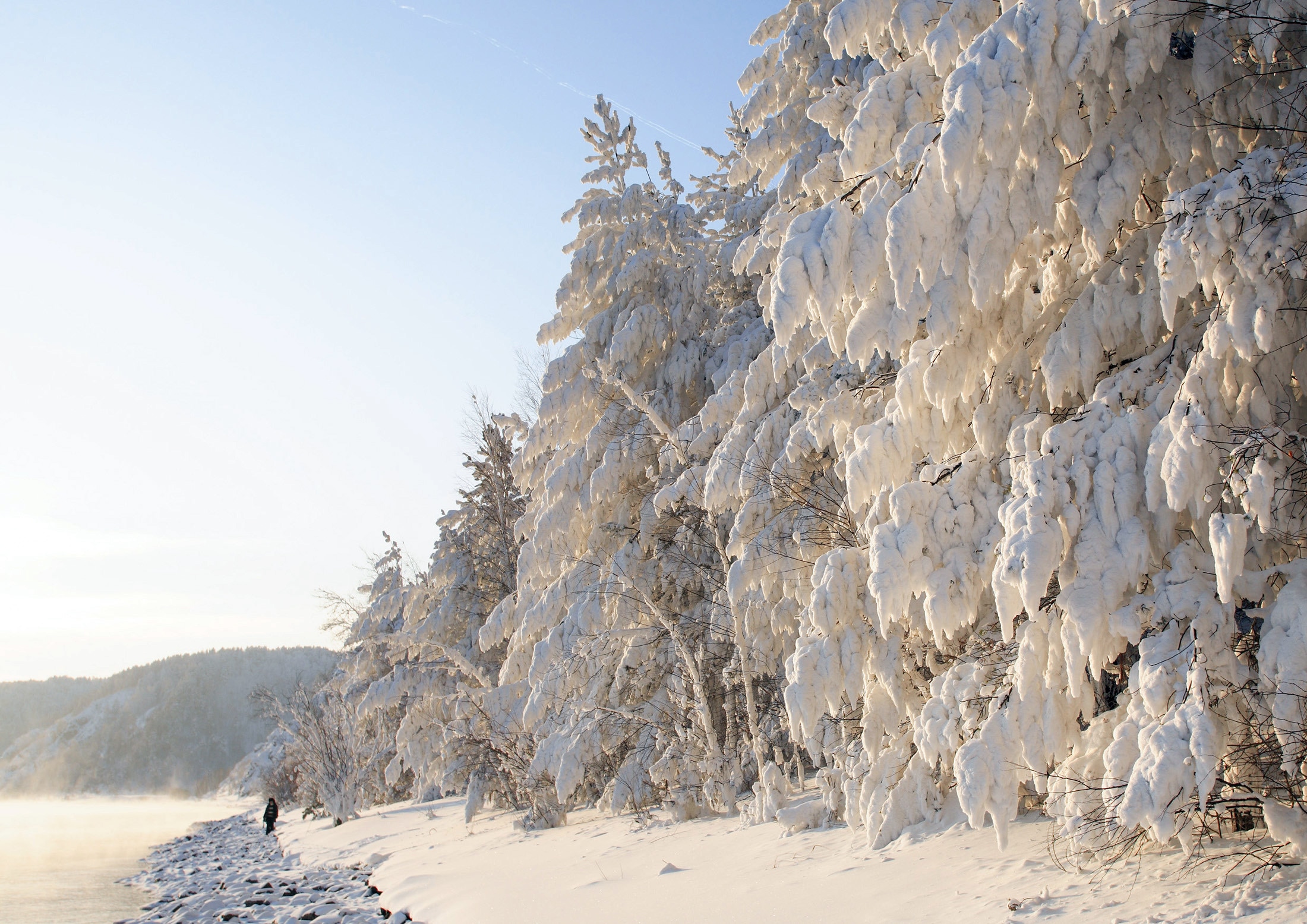https://www.weforum.org/agenda/2017/05/the-deadly-diseases-being-released-by-climate-change/
The deadly diseases being released as ice thaws


What would happen if we were suddenly exposed to deadly bacteria and viruses that have been absent for thousands of years? We may be about to find out.
Climate change is melting permafrost soils that have been solid for thousands of years, and as the soils melt they have the potential to release ancient viruses and bacteria that may be capable of springing back to life.
The most recent discovery of an ancient virus came when French and Russian scientists investigated a 30,000 year-old piece of Siberian permafrost.
In a paper published in 2014 in the Proceedings of the National Academy of Sciences, a team led by Jean-Michel Claverie of Aix-Marseille University revealed they had discovered a new “giant virus” that they named Pithovirus sibericum.
Giant viruses are so-called because they are much larger than traditional viruses. Pithovirus is the biggest ever found and measures 1,500 nanometres (billionths of a metre) across. That’s more than 10 times larger that the HIV virus.
What is more, after thawing the Pithovirus from its frozen state, Claverie and his team discovered that it was still infectious.
Fortunately, the virus’ targets are amoebae, and Pithovirus poses no danger to humans.
However, giant viruses can sometimes be harmful to people.
Nature magazine reports how in 2013 Christelle Desnues, a virologist at the French National Centre for Scientific Research in Marseilles, discovered signs that another giant virus, Marseillevirus, had infected an 11-month-old boy.
The virus was traced to one of the patient’s lymph nodes, which was then surgically removed.
In their paper, Claverie and his team warn that while Pithovirus is harmless to humans, the “revival of such an ancestral amoeba-infecting virus” suggests that “the thawing of permafrost either from global warming or industrial exploitation of circumpolar regions might not be exempt from future threats to human or animal health”.
Warming viruses
While global warming has yet to expose any ancient viruses harmful to humans, it has begun re-exposing more familiar diseases that modern society thought it had eradicated.
In August 2016, a 12 year-old boy in northern Russia was killed after being infected by Anthrax. The Anthrax outbreak, which saw up to 20 people hospitalised, was blamed on unusually warm weather in the arctic circle.
It is believed that a reindeer carcass infected with Anthrax was buried deep in the ice, but with temperatures reaching 35C in the Siberian tundra last summer, the carcass thawed and Anthrax spores were released.

Up to 2,300 reindeer were killed as a result of the outbreak, and the entire reindeer herdsman community – of which the fatally infected boy was a member – had to be evacuated.
Average temperatures in Russia have increased by 0.43C in the past 10 years, but the rise has been more pronounced in areas of the far north, according Alexei Kokorin, head of WWF Russia’s climate and energy programme.
Speaking to The Guardian, Kokorin said the warmer climate has begun thawing the permafrost soil that covers much of Russia, including cemeteries and animal burial grounds. Thawing permafrost has also led to greater erosion of river banks where nomads often buried their dead, Kokorin said.
Anthrax may not be the only infectious disease lurking in the ice. In 2004, US researchers successfully revived the 1918 Spanish flu – which killed millions of people – from a fragment of a corpse’s lung frozen in the Alaska permafrost.
Scientists have also discovered DNA fragments of smallpox in the Siberian permafrost.
Bigger threats
While the risk of infectious diseases being released by thawing permafrost is real, scientists are at pains to point out that the chances of any future pandemic are incredibly low.
Speaking in Nature magazine on the discovery of Pithovirus, Curtis Suttle, a virologist at the University of British Columbia in Vancouver, Canada, points out that people already inhale thousands of viruses every day, and swallow billions whenever they swim in the sea.
The idea that melting ice would release harmful viruses, and that those viruses would circulate extensively enough to affect human health, “stretches scientific rationality to the breaking point”, he said.
“I would be much more concerned about the hundreds of millions of people who will be displaced by rising sea levels.”
And rather than diseases being released by melting ice, some argue that as Earth warms northern countries will become more susceptible to outbreaks of “southern” diseases like malaria, cholera and dengue fever, as these pathogens thrive at warmer temperatures.
In warmer countries climate change is already having a devastating effect on people’s health. In central America incidences of chronic kidney disease are on the rise, and are being blamed on increased dehydration as hotter days become more frequent.




